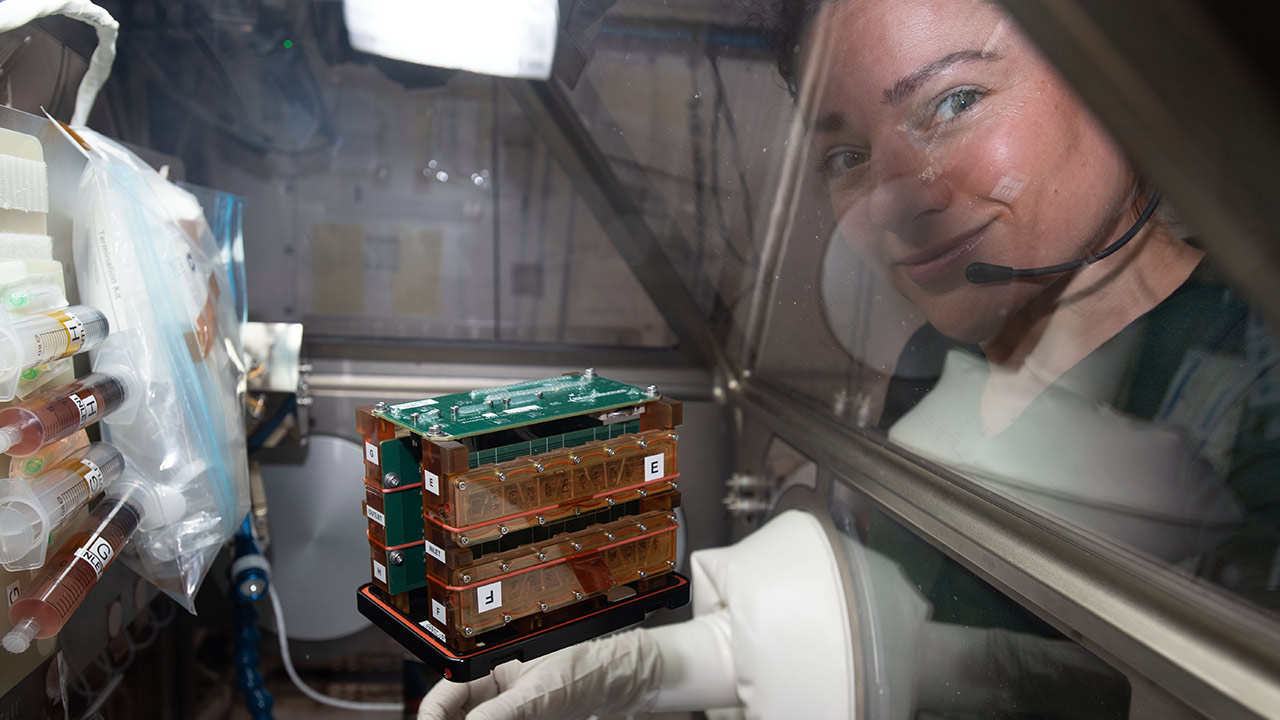Northrop Grumman’s 16th Commercial Resupply Services (CRS) mission to the International Space Station (ISS) is slated for launch no earlier than August 10 at 5:56 p.m. ET from Wallops Flight Facility in Virginia. The ISS U.S. National Laboratory is sponsoring multiple payloads on this mission that will bring value to our nation and enable a sustainable market in low Earth orbit.
Below are highlights of ISS National Lab-sponsored payloads that are part of the Northrop Grumman CRS-16 mission to the space station.
Additive Manufacturing Operations Program
Redwire Space
Principal Investigator (PI): Michael Snyder
Additional components for the Redwire Space Additive Manufacturing Facility are launching on this mission. The Additive Manufacturing Operations Program allows the ISS user community to use the Additive Manufacturing Facility. Through this program, objects for experiments and technology demonstrations are produced onboard the ISS in a fraction of the time currently required to have such objects manifested and delivered to the ISS using traditional ground preparation and launch. Redwire Space hopes to use this program to develop a commercial market for in-space manufacturing.
Implementation Partner: Redwire Space
Genes in Space-8
Boeing (in collaboration with miniPCR bio)
PI: Scott Copeland and Kristoff Misquitta
This student investigation seeks to visualize the gene expression of liver enzymes in space using a miniPCR (polymerase chain reaction) machine and the new Genes in Space Fluorescence Viewer tool, as a method to gauge the liver health of astronauts. The experiment explores whether spaceflight-induced differences in the levels of liver gene expression could help explain why medications taken by astronauts during spaceflight are sometimes less effective than on Earth. Results could lead to the development of new diagnostic tools for use in space and improved therapies for astronauts. Additionally, once validated through this investigation, the Genes in Space Fluorescence Viewer can be used in future studies on the ISS.
Implementation Partner: miniPCR bio
Novel Protein Aggregation/Degradation Studies in the Unique ISS Environment
GlaxoSmithKline
PI: Dr. Deidre Wilk
This project aims to leverage the microgravity conditions on the ISS to study protein degradation in biopharmaceuticals (protein-based drugs). Degradation is a significant challenge in these drugs because it can lead to decreased efficiency and increased side effects. The research team will study monoclonal antibodies, the fastest growing class of biopharmaceuticals, on the ISS under the stresses of microgravity and cosmic radiation to gain a better understanding of the causes that lead to degradation. Results could reveal new strategies to prevent protein degradation, which could aid in the development of improved formulations of biopharmaceuticals that are safer and have longer shelf lives.
Implementation Partner: STaARS
Prototype InfraRed Payload (PIRPL)
Northrop Grumman Corporation
PI: Scott Sage
The Prototype InfraRed Payload (PIRPL) will use multispectral detectors to characterize Earth’s atmosphere from the vantage point of low Earth orbit. A better understanding of the spectrum of Earth’s atmosphere may help improve communications between Earth and satellites, imaging of Earth’s surface from space, and tracking of space objects.
Implementation Partner: Northrop Grumman Corporation
Tissue Engineered Muscle as a Novel Platform to Study Sarcopenia (Cardinal Muscle)
Palo Alto Veterans Research Institute
PI: Dr. Ngan Huang
This project aims to leverage microgravity conditions to develop a tissue engineered model of sarcopenia (muscle loss due to aging) using engineered skeletal muscle. Efforts to identify potential drugs to treat sarcopenia have been hindered by the condition’s slow progression in clinical studies. Microgravity is known to accelerate the process of muscle loss, enabling an accelerated model of sarcopenia. Once validated, this model could be used to study the progression of muscle deterioration and could serve as a valuable platform for testing potential treatments for conditions that cause muscle wasting. This project is funded by the National Science Foundation.
Implementation Partner: BioServe Space Technologies







